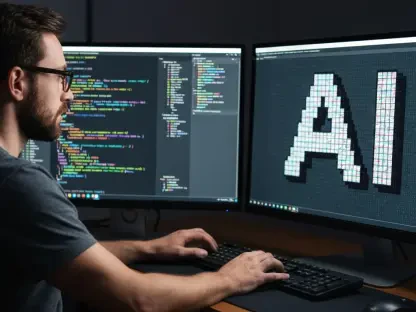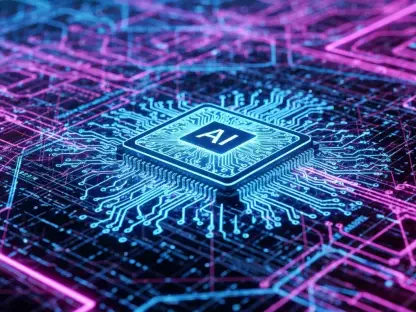Introduction
The modern stack hums with automation and dashboards, yet many teams still confuse visible motion with actual progress, mistaking floods of commits and AI-amplified pull requests for meaningful advances in software quality or business results. This misunderstanding creates a costly loop: more code begets more maintenance, which demands more hurried fixes, which invites even more code, while the underlying product questions remain underexamined and unresolved.
This FAQ explores why volume is a poor proxy for value and why code generation, whether by tired humans or energetic models, often leads to diminishing returns. The goal is to reframe the conversation from output to outcome: how to use AI to reclaim time and attention for the human parts of the stack—problem framing, design clarity, and long-term ownership. Readers can expect pragmatic guidance, grounded by industry data and practitioner insights, on directing AI toward leverage rather than bloat.
Moreover, the discussion traces a pattern from the “996” grind ethos to its machine-accelerated echo: the same brute-force mindset, now turbocharged by large language models. In contrast, sustainable engineering requires slack, discernment, and simplification. What follows addresses the most common questions leaders and engineers ask when trying to harness AI without drowning in it.
Key Questions Or Key Topics Section
What Exactly Is the Core Problem Being Solved Here?
The real problem is not typing speed; it is decision quality. Many organizations adopted AI coding tools believing that faster generation equals faster progress, but the constraint in software is rarely the ability to produce lines—it is the ability to choose the right lines to write, and the many not to write. When teams prioritize throughput, they tend to postpone hard thinking about user needs, system boundaries, and architectural trade-offs.
In practice, this leads teams to ask AI for more features or more scaffolding when the better move might be subtraction: consolidating services, cutting options, or reusing existing capabilities. The question, then, is not “How quickly can code be produced?” but “What is the smallest coherent solution that solves a real problem with reliability and clarity?”
Does More Code Or More Hours Lead To Better Outcomes?
The evidence suggests otherwise. Drawing from critiques of the “996” culture, relentless pace often produces sameness and shallow improvements rather than breakthroughs, because exhaustion decreases the capacity for critical judgment. The same dynamic appears when AI is used simply to push volume; the quantity looks impressive, but quality lags.
Moreover, when output is celebrated, teams optimize for the visible metric—commits, tickets, lines—rather than the invisible outcome: maintainability, resilience, and clear user value. This misalignment pushes organizations toward busywork masquerading as progress, which later shows up in operational fragility and product drift.
What Does The Data Say About AI’s Impact On Code Quality?
Two complementary signals stand out. GitHub reported that developers can code up to 55% faster with AI assistance. At the same time, GitClear’s analysis of more than 150 million lines noted rising code churn within two weeks, more copy-paste signatures, and less refactoring. These trends hint at speed without corresponding design rigor.
This gap matters because churned code and reduced refactoring correlate with larger, harder-to-understand codebases. Short-term acceleration can mask long-term risk: more paths to secure, more interfaces to test, and more surprise behavior during incidents. Faster creation without careful curation multiplies debt rather than value.
Why Is Code Best Understood As A Liability, Not An Asset?
Every line ships with an annuity of costs: security scanning and patching, debugging and on-call burden, compliance reviews, and eventual refactoring or deprecation. When AI is treated as a bulk generator, that burden scales nonlinearly, because each new edge case spawns test expectations and integration points that must be owned indefinitely.
In contrast, teams that celebrate “negative code”—deletions, consolidation, and simplification—tend to ship more stable systems. Less surface area reduces failure modes and cognitive load. The best feature may be the one removed; the best module may be the one not added because a simpler design made it unnecessary.
Where Is The Real Bottleneck In Software Work?
The bottleneck is thinking, not typing. Senior engineers create value by editing plans, eliminating dead ends, and aligning architecture with real usage. The scarce resource is attention for reasoning and design, not keystrokes. Both 996-style grind and AI-driven code deluge erode this resource by flooding teams with changes that demand review and triage.
When reviewers become PR janitors, opportunities for invention vanish. Architecture discussions become transactional. Instead of guiding systems toward coherence, leaders spend cycles firefighting inconsistencies spawned by speed-first habits. The upshot: shipping more while understanding less.
How Should AI Be Aimed To Create Real Leverage?
Aim AI at tasks that free time rather than consume it. High-leverage candidates include unit tests, boilerplate, migration scaffolds, and routine documentation updates. These are repetitive, well-bounded activities where speed helps and risk is manageable when combined with solid review practices and automated checks.
By contrast, entrusting AI with core design choices or sprawling feature generation invites drift. The smarter play is to use models to generate options and artifacts while humans do the narrowing: selecting the minimal design, declaring trade-offs, and making naming, boundary, and lifecycle decisions that give systems a durable shape.
How Can Leaders Shift Metrics Away From Volume?
Replace raw throughput measures with signals of maintainability and stability. Track refactoring frequency, defect escape rate, mean time to recovery, and the ratio of deletions to additions on mature components. Reward designs that converge—fewer services, simpler APIs, clearer interfaces—over those that fan out.
Culturally, language matters. When dashboards highlight commit counts, teams chase them. When reviews praise clarity and deletion diffs, engineers optimize for simplicity. Over time, the organization learns to value fewer, better changes, which aligns incentives with long-term health.
What About Training And Skill Development In An AI Era?
Juniors, in particular, need structured exposure to reading and reasoning about code, not only generating it. Training should include prompting, verification strategies, property-based tests, and refactoring discipline. Without this foundation, AI can become a crutch that weakens rather than strengthens engineering judgment.
Pairing helps. Encourage sessions where an engineer uses AI to propose alternatives, then the pair debates trade-offs and edits ruthlessly. This practice builds taste—an ability to see when less is more and when a shiny addition simply hides an unclear product story.
How Do Teams Preserve System Knowledge While Using AI?
Ownership must remain human. Ensure that the people on call understand the code paths they operate. Rotate on-call thoughtfully, couple it with postmortems that emphasize learning, and avoid letting AI produce so much new surface area that no one holds the big picture in mind.
Documentation can be AI-assisted, but accountability should be explicit. Design docs, runbooks, and architecture notes benefit from model-generated drafts, yet they require human editing to capture intent, constraints, and failover behavior. That narrative context is the map engineers carry during incidents.
Why Does Slack Matter, And How Can It Be Protected?
Slack is the oxygen for insight. Deep work blocks allow engineers to explore alternatives, run cheap experiments, and spot the subtraction that saves months later. When the calendar is saturated or the repo is flooded with AI-generated changes, slack evaporates and with it the conditions for novel solutions.
Guard this space deliberately. Limit the number of concurrent changes hitting reviewers. Batch lower-stakes updates. Reserve time for design reviews where no code is written, only decisions are made. Paradoxically, slowing some streams accelerates overall progress by restoring attention to the true constraint.
Can Humans With AI Outperform Humans Without AI?
Yes—when AI augments judgment instead of replacing it. Karim Lakhani’s view that humans with AI will outcompete humans only holds under governance that channels the tool toward toil reduction and option exploration. Without that guardrail, the advantage flips, and teams find themselves mired in complexity their tools helped spawn.
The winning pattern is consistent across teams that sustain quality: use AI to widen the option set, apply human expertise to prune it, and invest in practices—testing, observability, and refactoring—that keep systems understandable as they evolve.
Summary Or Recap
The discussion established that speed is not a synonym for progress and that more lines or longer hours rarely produce superior systems. Data aligned with experience: AI can increase throughput, yet churn and reduced refactoring show how easy it is to inflate codebases while neglecting design intent. Code carries a permanent cost, so indiscriminate generation multiplies risk rather than advantage.
Furthermore, the real pinch point is human thinking time. Innovation needs slack, and slack disappears when teams chase metrics that celebrate motion over mastery. The practical remedy is to point AI at routine work, protect design attention, and reshape incentives around maintainability, reliability, and simplicity. For deeper exploration, consider work by Gergely Orosz on organizational pace, Charity Majors on senior engineering, GitClear’s churn analyses, GitHub’s productivity findings, and Karim Lakhani’s research on humans with AI.
Conclusion Or Final Thoughts
This FAQ closed with a simple blueprint: reclaim time for judgment, aim AI at toil, and measure what endures. Teams that acted on these principles reduced churn, favored smaller coherent designs, and kept engineers close to the systems they operate. Leaders shifted metrics toward refactoring, resilience, and negative diffs, while training focused on reading and reasoning, not just generating.
Looking ahead, the next step was to institutionalize slack through scheduling and change management, expand observability so design choices stayed testable in production, and formalize ownership so AI never detached humans from accountability. By turning the tool toward subtraction—less complexity, fewer interfaces, clearer intent—organizations created space for the work that actually moved outcomes: crisp problem framing, thoughtful design, and steady, durable reliability.









